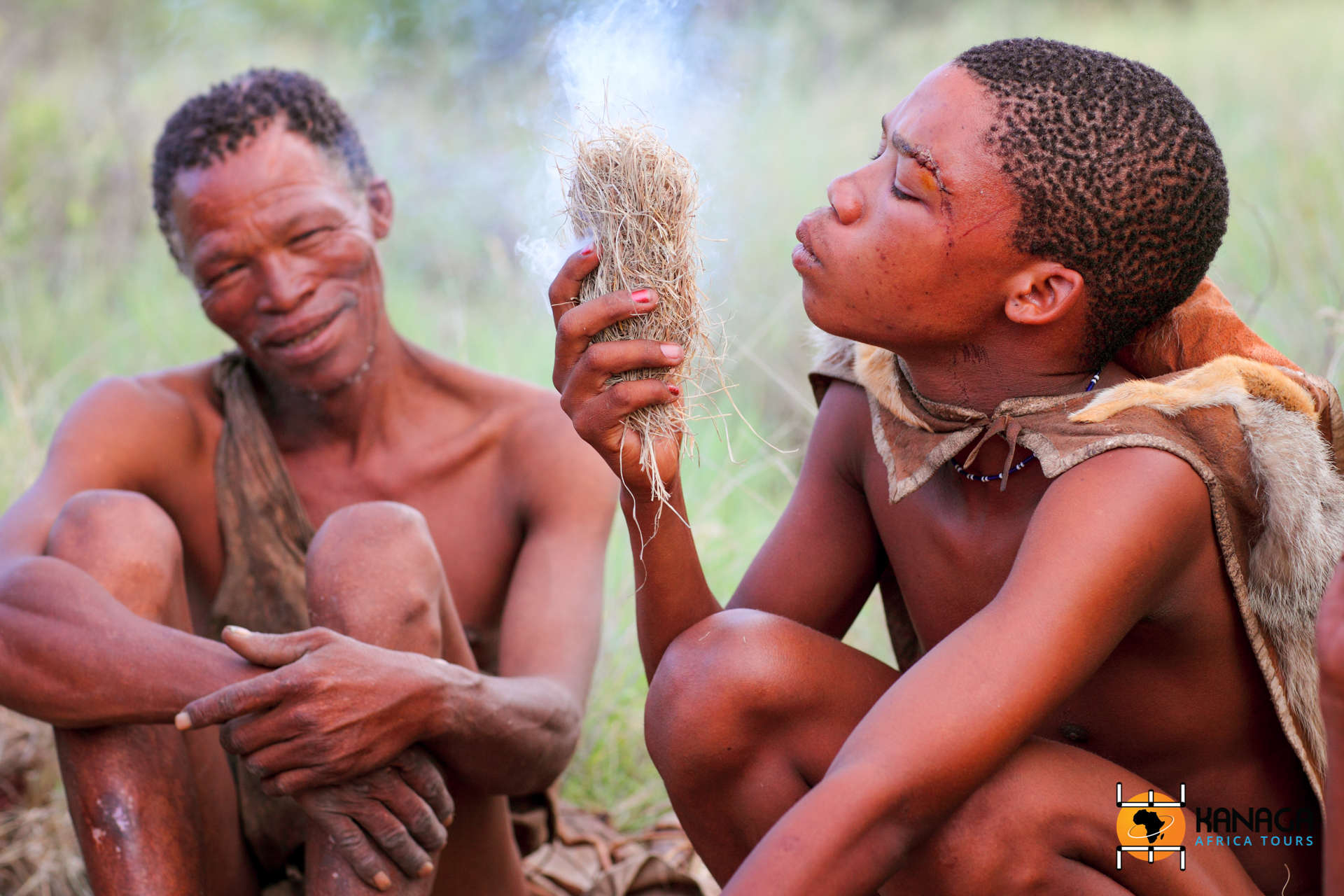In the vast Kalahari desert region, home to one of the largest wildlife reserves on the planet, you can meet the Bushmen, ancient inhabitants of Southern Africa, skilled hunters with poisoned arrows.
Covering an area of more than 900,000 square kilometres, the Kalahari Desert, divided between Botswana, Namibia and South Africa, is characterised by reddish sands and steppe parts. This fascinating and inhospitable area (called Kgalagadi by the Tswana, or ”land of thirst”) is home to the Central Kalahari Wildlife Reserve, founded in 1961, which covers an area of almost 53,000 square kilometres, making it the second largest reserve in the world, characterised by plains covered by bushes and grasses, where it is possible to spot big cats (lions, leopards, cheetahs) in search of their prey (wildebeest, oryx, zebras, impalas, …).
The San people (also known as Bushmen) are an ethnic group living in these arid areas, where they have found their livelihood through a thorough knowledge of the environment and a reduced set of techniques effective in that environment. Related to the Khoikhoi, with whom they form the Khoisan group, they have inhabited southern Africa for over 20,000 years (some claim as long as 100,000 years), and are mainly hunter-gatherers, famous for their system of gestural communication while hunting and for their arrows poisoned with the sap of the Euphorbia damarana, which has earned them the nickname ”scorpion men”. Traditional religious rites are pervaded by a ‘‘homeopathic magic”, a definition used by the anthropologist James Frazer (if you want to hunt a fast animal like the gazelle, the San will eat the meat of a slow animal like the tortoise, so as to transfer this characteristic – the slowness – to their prey), and the main art form was the petroglyphs, still visible in many rocky areas around the Kalahari.



